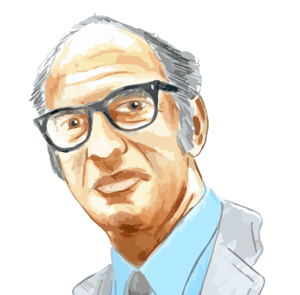In his most famous work “The Structure of Scientific Revolutions” (1962 and 1969), the philosopher Thomans Kuhn analyzes the history of science and its various implications in all areas of research.
According to Kuhn’s vision, scientific development is made up of three main components:
Paradigm, namely a set of universally recognized principles, methodological processes and cultural concepts that refers to the work of the “scientific community” of a certain era. The scientific community is made up of scientists who, possessing the same paradigm, share the same ethical vision, assessment criteria, interpretative models, methods and solutions for solving problems and who believe their successors ought to be educated on the basis of these same contents and values.
Normal science, namely a phase in which scientists appear committed to consolidating, confirming and developing existing paradigms by solving contradictions and “puzzles” as they arise. Kuhn believes that normal science enters a crisis due to a series of “anomalies”, i.e. new and unexpected events, which scientists then attempt to adapt with varying degrees of success within “the prefabricated and relatively rigid boxes” provided by the existing paradigm. However, these actions, repeated over time, cause the old system to weaken from the inside, producing a true and proper crisis.
Revolutionary breakdown, namely the time when there is a true and proper turning point that leads to the abandonment of the old paradigm and the arrival of a new way of looking at the world. Scientists, when faced with multiple problems that they cannot solve by applying a certain paradigm, question the principles followed and accepted up until that time as “dogmas” and go on the search for a new paradigm. Everything, therefore, has to be rethought: basic concepts, methods and problems.
“When paradigms change, the world itself changes with them. Led by a new paradigm, scientists adopt new instruments and look in new places. Even more important, during revolutions scientists see new and different things when looking with familiar instruments in places they have looked before. It is rather as if the professional community had been suddenly transported to another planet where familiar objects are seen in a different light and are joined by unfamiliar ones as well”.
Subsequently, Kuhn defined the paradigm also like a “disciplinary matrix”, made up of four sections: symbolic generalizations, metaphysical presumptions, value judgments of theories, and puzzle solvers used as models or examples.
In this way Kuhn presents a vision of scientific progress that must always be correlated with an actual situation and whose validity is limited to a well-defined methodology. The classic notions of improvement and development can therefore only be managed in particular fields.
Kuhn’s vision is more relevant than ever today and sets scientists a fascinating task: to build clear criteria to assess if new knowledge increases or decreases the collective wealth accumulated in the historical memory of scientific practice.

